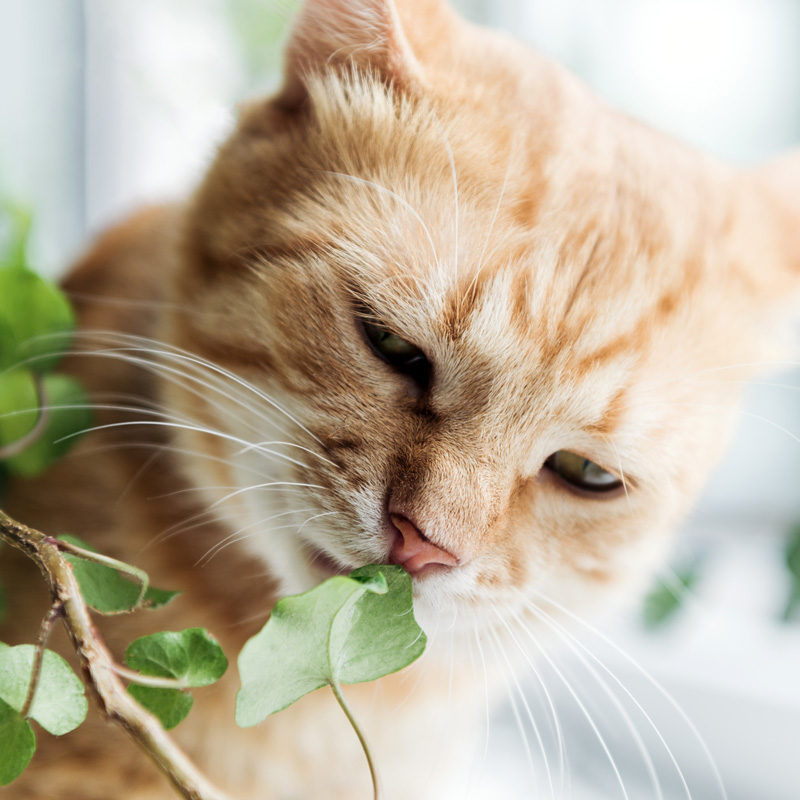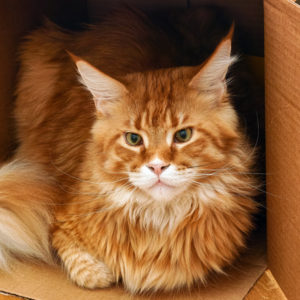
Extra Credit with Carla Betlem, Instructor and Senior Staff Specialist at Rochester Institute of Technology & Founder of the Student Club Caring Hearts for RIT Cats
April 19, 2022
Taking Care of Both Ends of the Leash with Jon Geller, The Street Dog Coalition
April 26, 2022
By Rachel Geller, Ed.D. Certified Cat Behavior & Retention Specialist
Earth Day is April 22, so let’s look at ways we can celebrate by going green with your cat! First of all, recycle everything that you can. If you feed your cat canned food, buy the biggest cans. It’s more ecological and less metal. And of course, recycle those cans.
Save all that extra plastic in your house for litter box poop-scooping bags. It could be something like that bread bag, cereal box bag, or the plastic bag that your newspaper comes in. Here’s another green option for scooping the litter box: use a bucket or other container that has a lid and line it with a plastic bag. Put all the litter box waste in it. After a week, remove the plastic bag and put it in with all your other trash. You’ll use way fewer plastic bags this way.
Look for a cat litter that is made from biodegradable ingredients and doesn’t have artificial fragrances, additives, or silica dust. One of the best choices you can make for your cat and the environment is to choose a biodegradable cat litter. Alternative litters are made from a variety of materials alone or in mixtures including paper, corn, walnuts, wheat, wood, pine, and grass are widely available. There are also unscented litters made solely from recycled paper.
Many cleaning solutions are harmful to people and cats. Try using an ecological alternative that doesn’t contain bleach, ammonia, formaldehyde, isopropyl alcohol, or any other chemicals that are harmful to our planet. Look for products that are eco-friendly and made with biodegradable ingredients. Fill an empty spray bottle with equal parts of white vinegar and water and then add 3-4 drops of dishwashing soap. This is an easy-to-make cleaning solution and contains no harmful chemicals. Now you have an ecological way to clean the litter box or other little deposits such as hairballs.
There are cat owners who are constantly buying new coated paper or plastic dishes as a way to feed their cats. Instead, choose the green alternative and use dishes made out of stainless steel. When refreshing your cat’s drinking water bowl, use it to water your houseplants or garden rather than dumping the old water down the drain.
Rather than buying plastic toys for your cats, recycle your own worn-out socks (or those single socks that seem to get lost in the laundry!) to be used as cat toys. Sock cat toys are super easy to make. All you need is catnip and an old sock! Pour the catnip into the top and then tie it in a knot. Fancy battery-powered plastic cat toys are often no more enticing to your cat than a toilet paper roll, crumpled-up junk mail, or a crushed-up ball of recycled foil. Read labels and you can find many cat toys made out of recycled products. For example, the RippleRug is an interactive activity toy that is fun for your cat and good for the planet. This activity mat will keep your cat entertained for hours and it is made from recycled plastic bottles.
 Instead of buying new cat beds, tunnels or cubes, use cardboard boxes. A cardboard box can be repurposed as a bed with a cozy blanket or quilt. Cut off the flaps at the ends to make a tunnel. Or place the box on its side to create a cat cube.
Instead of buying new cat beds, tunnels or cubes, use cardboard boxes. A cardboard box can be repurposed as a bed with a cozy blanket or quilt. Cut off the flaps at the ends to make a tunnel. Or place the box on its side to create a cat cube.
Last, donate to shelters. Do you have an old towel or sheets you’ve been meaning to get rid of? There are millions of cats that could use these items in shelters while they await their permanent homes. Many shelters are non-profit and appreciate these donations to help clean and care for the cats. It’s a win-win situation: you keep the old sheets and towels out of landfills and at the same time keep a cat clean and comfy until she finds her new home.
About Dr. Rachel Geller
Dr. Rachel Geller is a Certified Cat Behavior & Retention Specialist. She is also a certified Humane Education Specialist through the Academy of Prosocial Learning and a certified Pet Chaplain® through the Association of Veterinary Pastoral Education. She is also Fear Free certified. She provides cat behavior help both locally and throughout the country to her clients, who include cat owners, shelters, rescues, and animal welfare organizations. Rachel serves and has served on many cat-related boards and advisory boards.
Rachel has given or participated in presentations for the Humane Society of the United States (HSUS), the Massachusetts Animal Coalition, and the New England Federation of Humane Societies on topics involving cat behavior, cat behavior and retention programs, and surrender prevention. Rachel’s cat behavior and retention program has been recognized by HSUS as a model program.
Rachel’s book, Saving the World, One Cat at a Time, was written to help with resolving cats’ behavioral and emotional problems with the goal of creating harmonious relationships between cats and their owners. All of the proceeds from book sales go to cat shelters.




